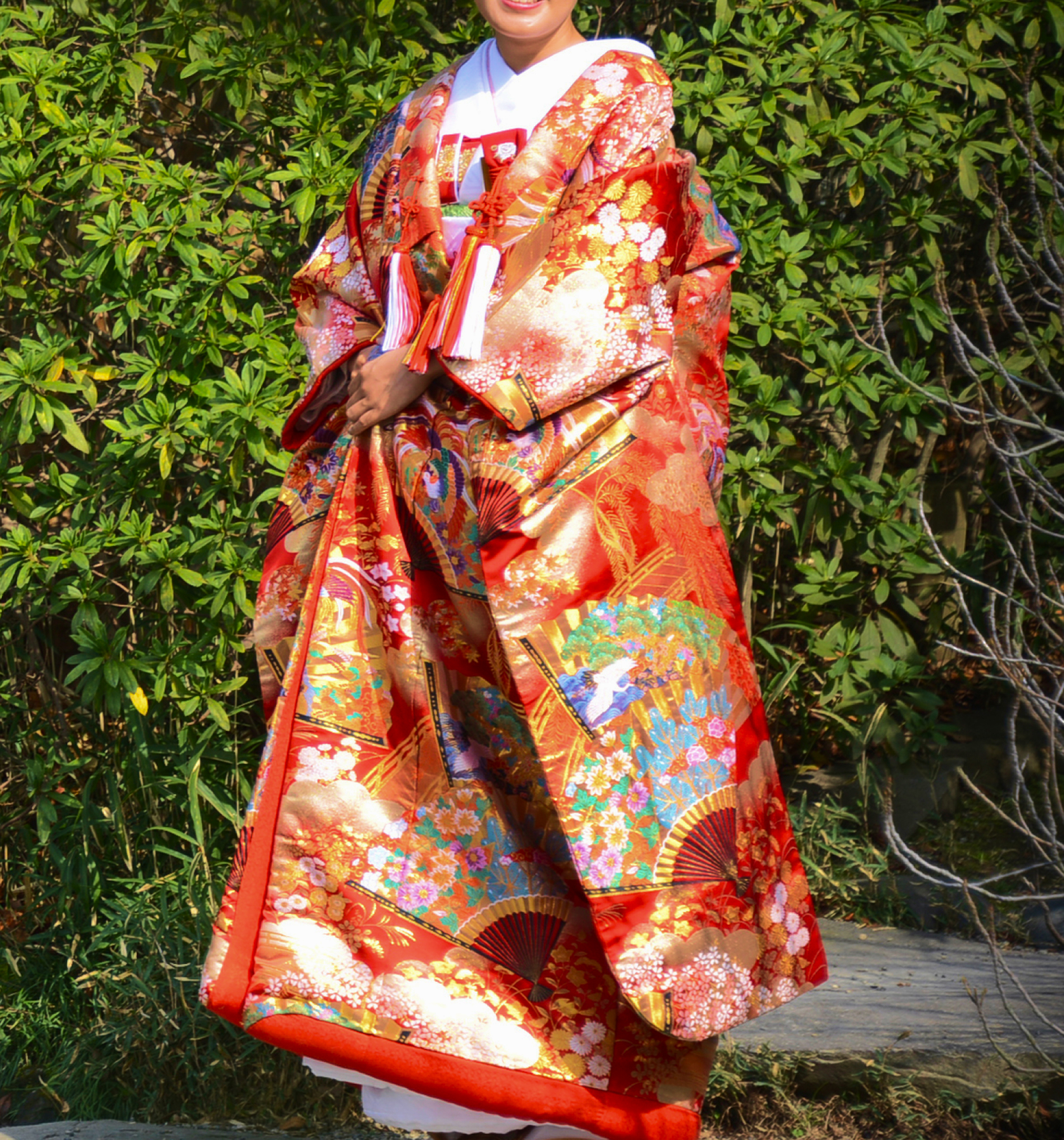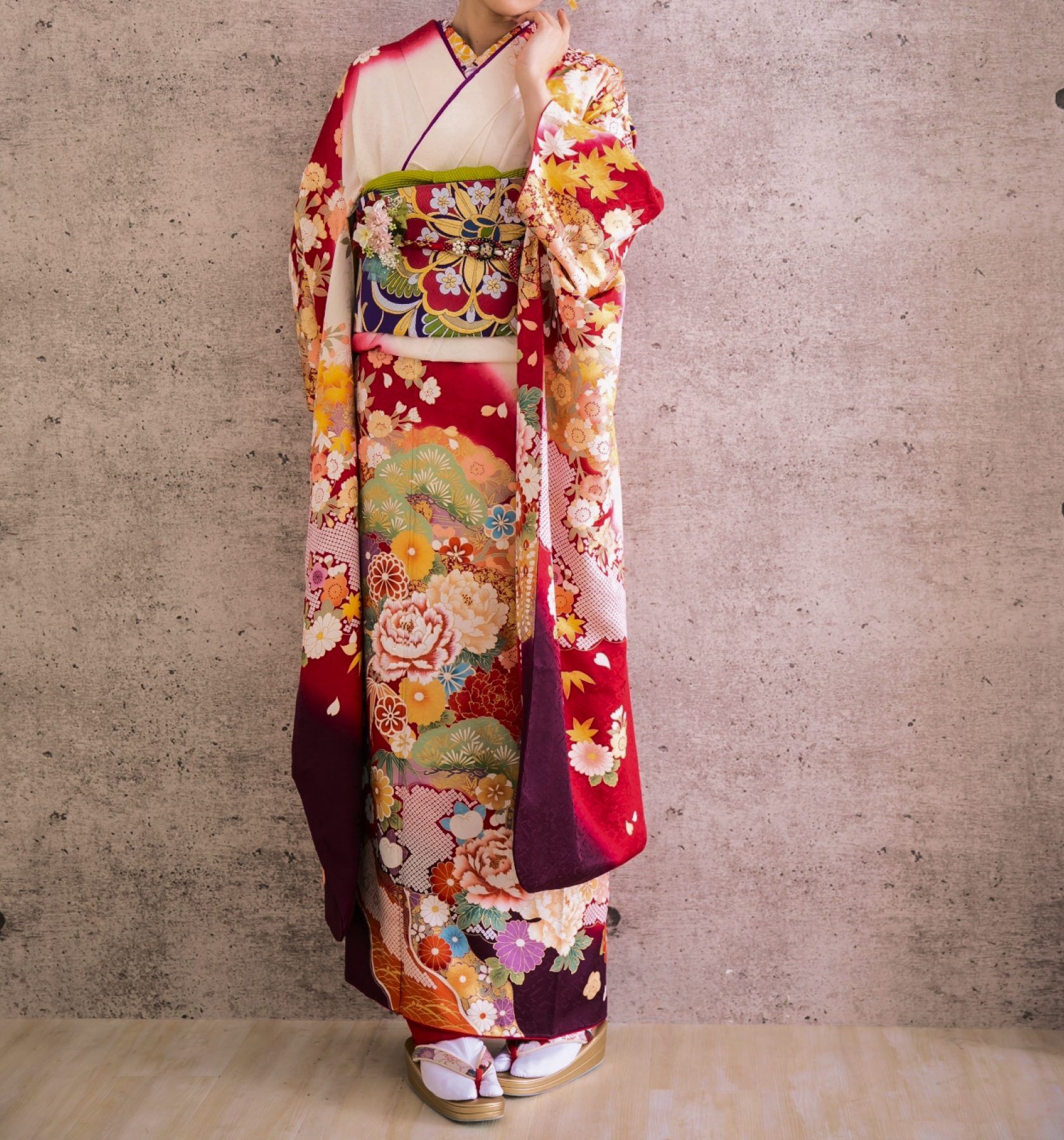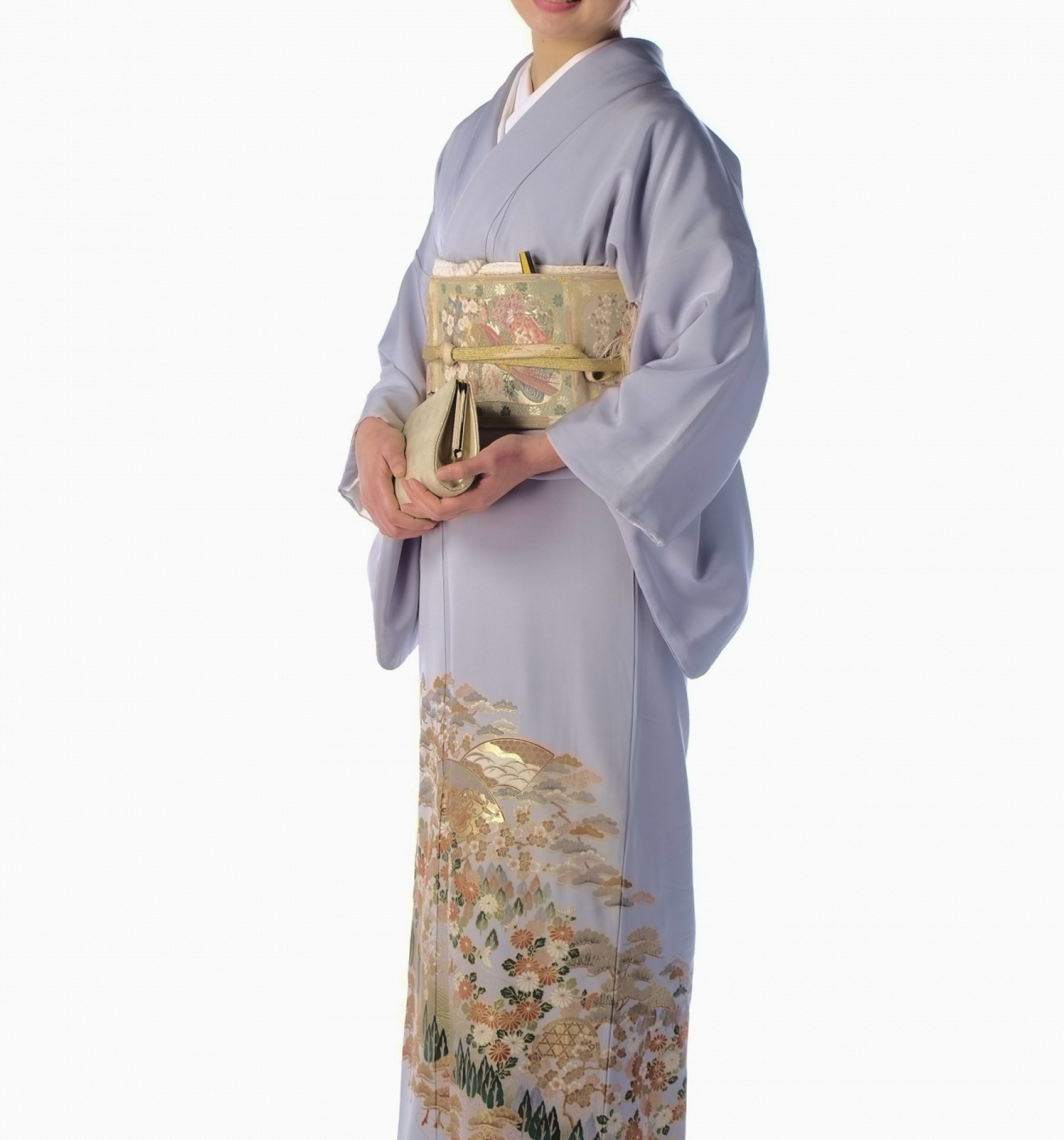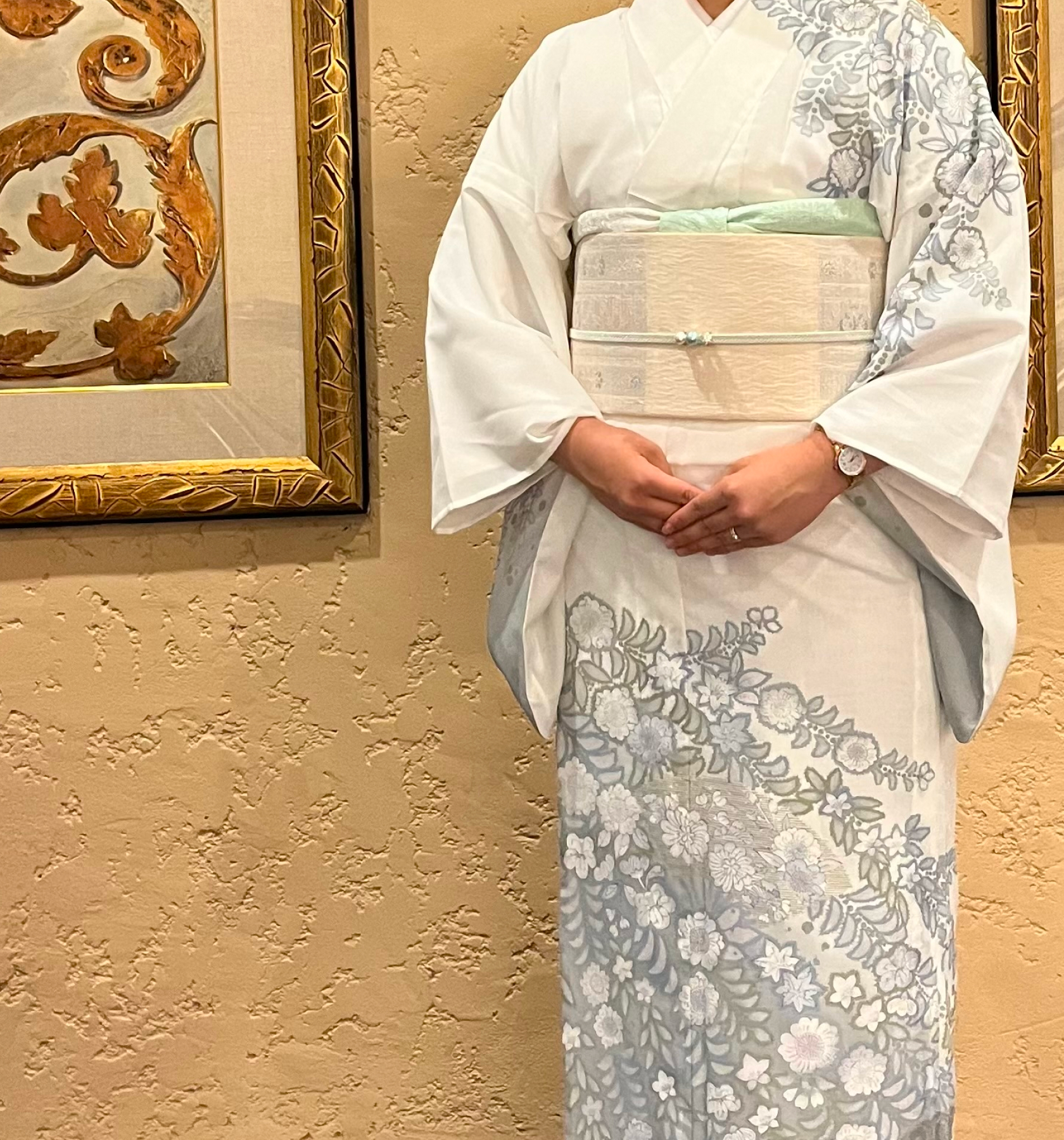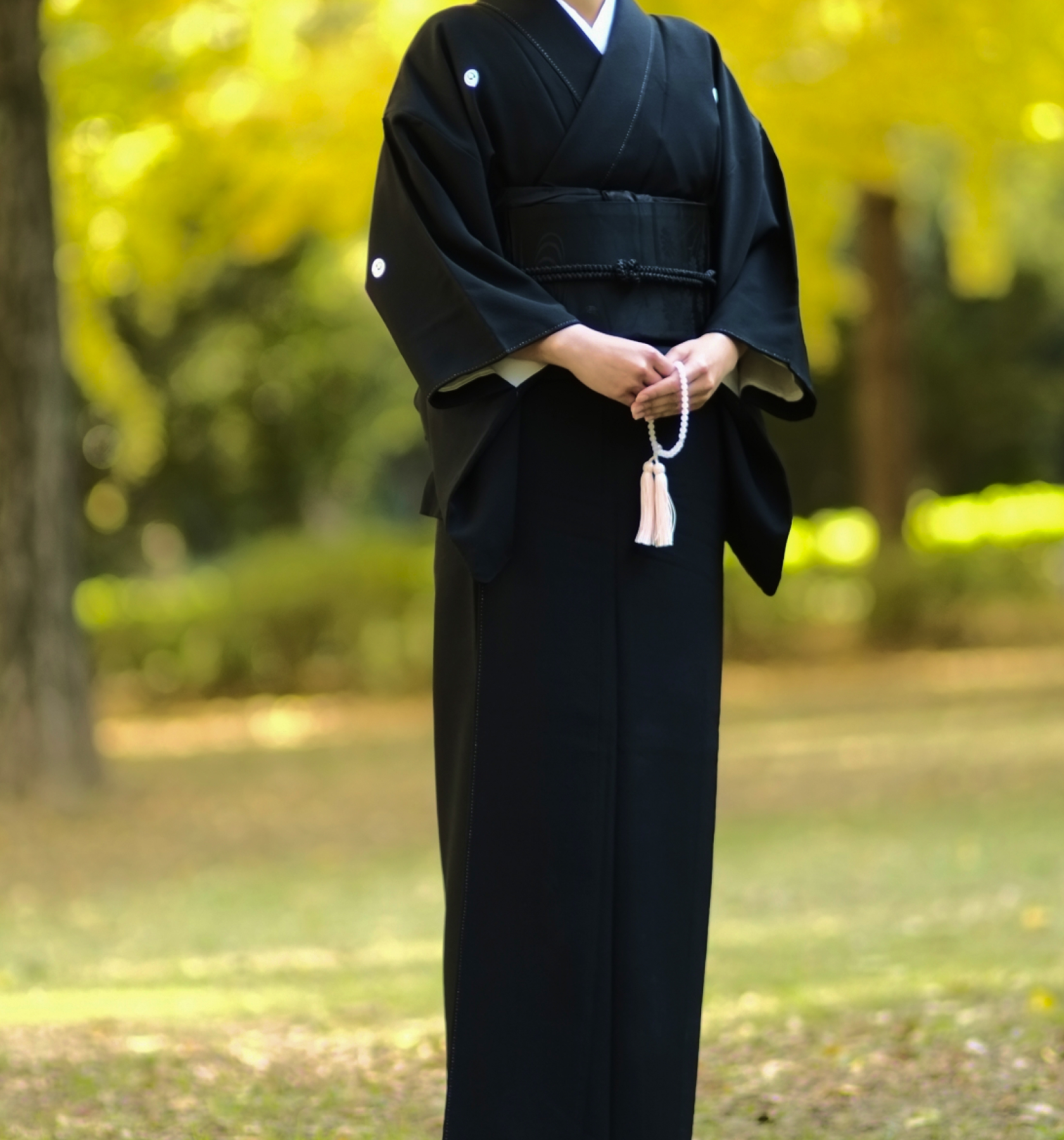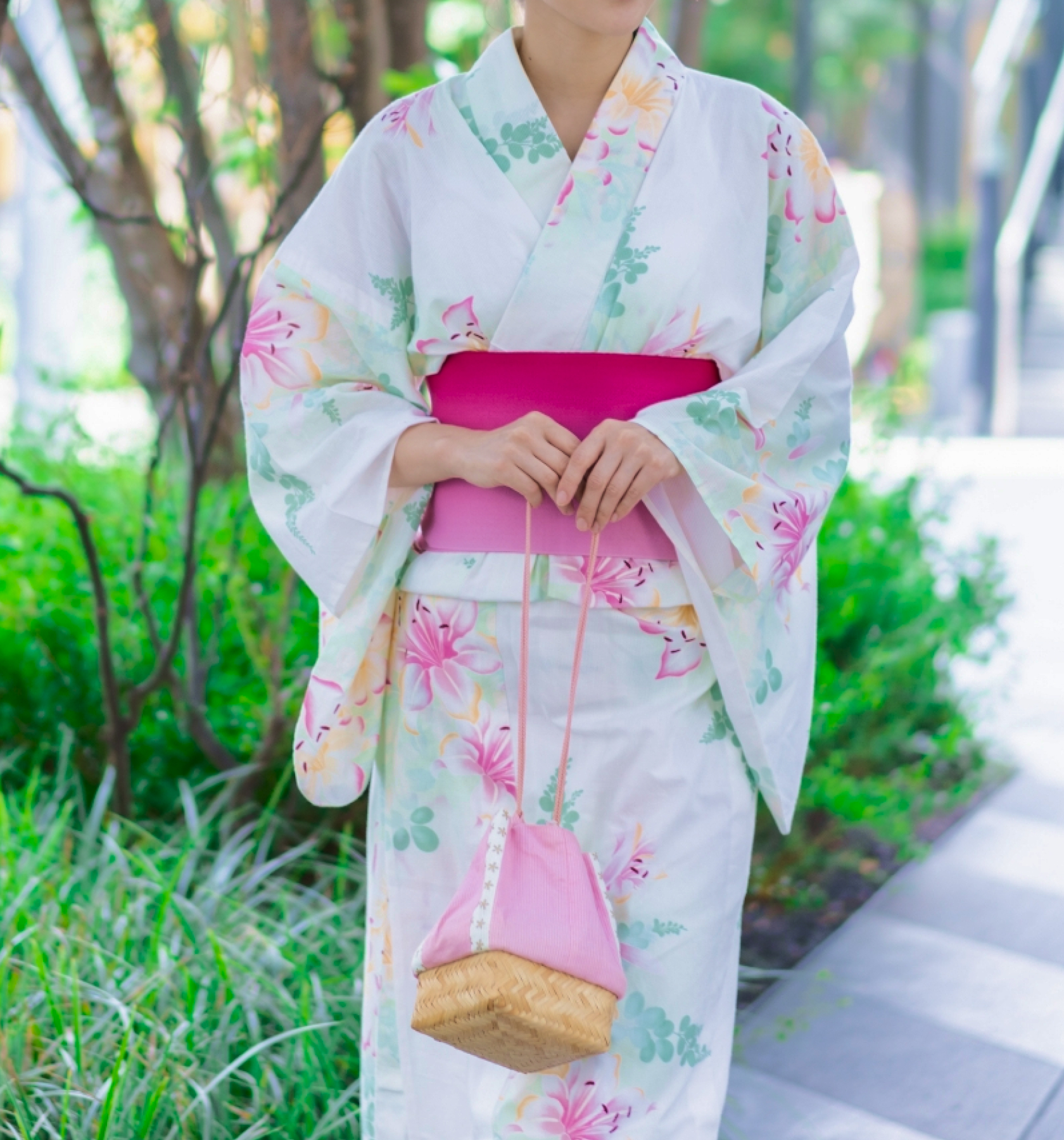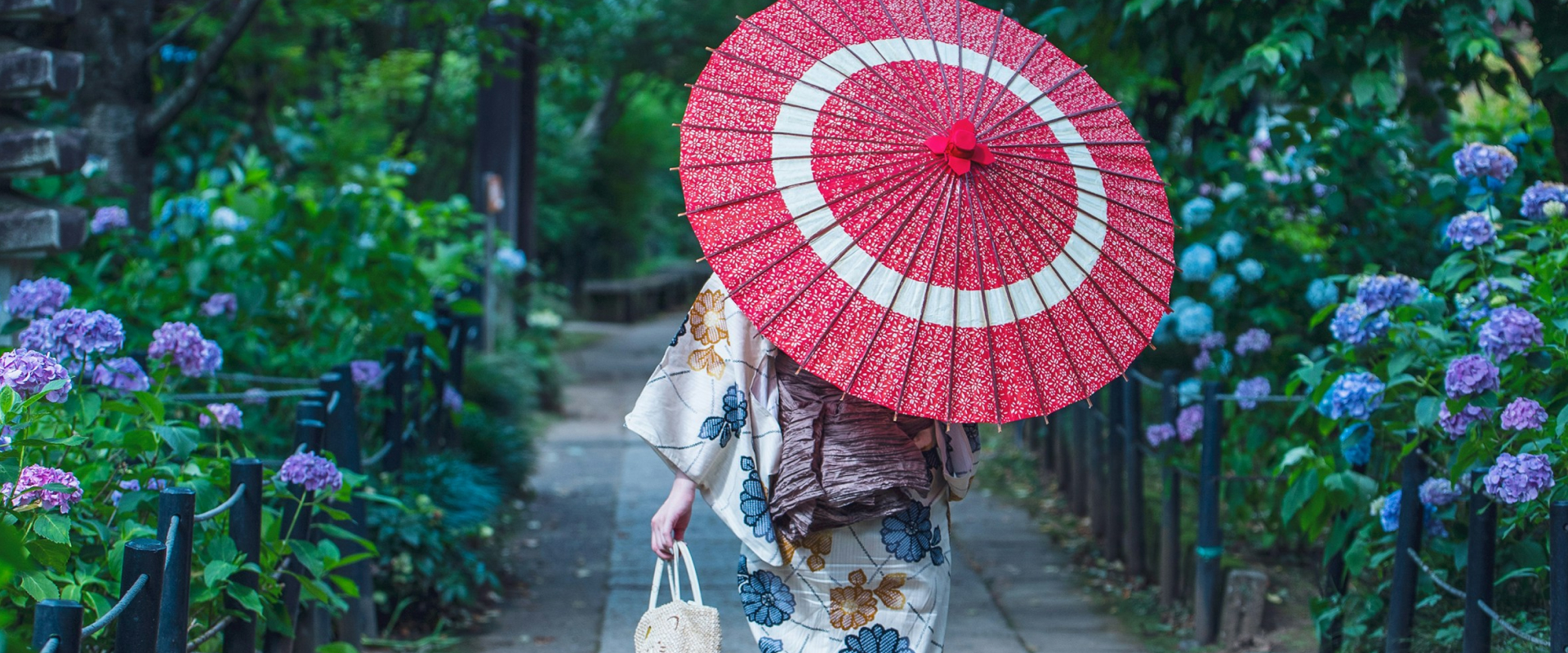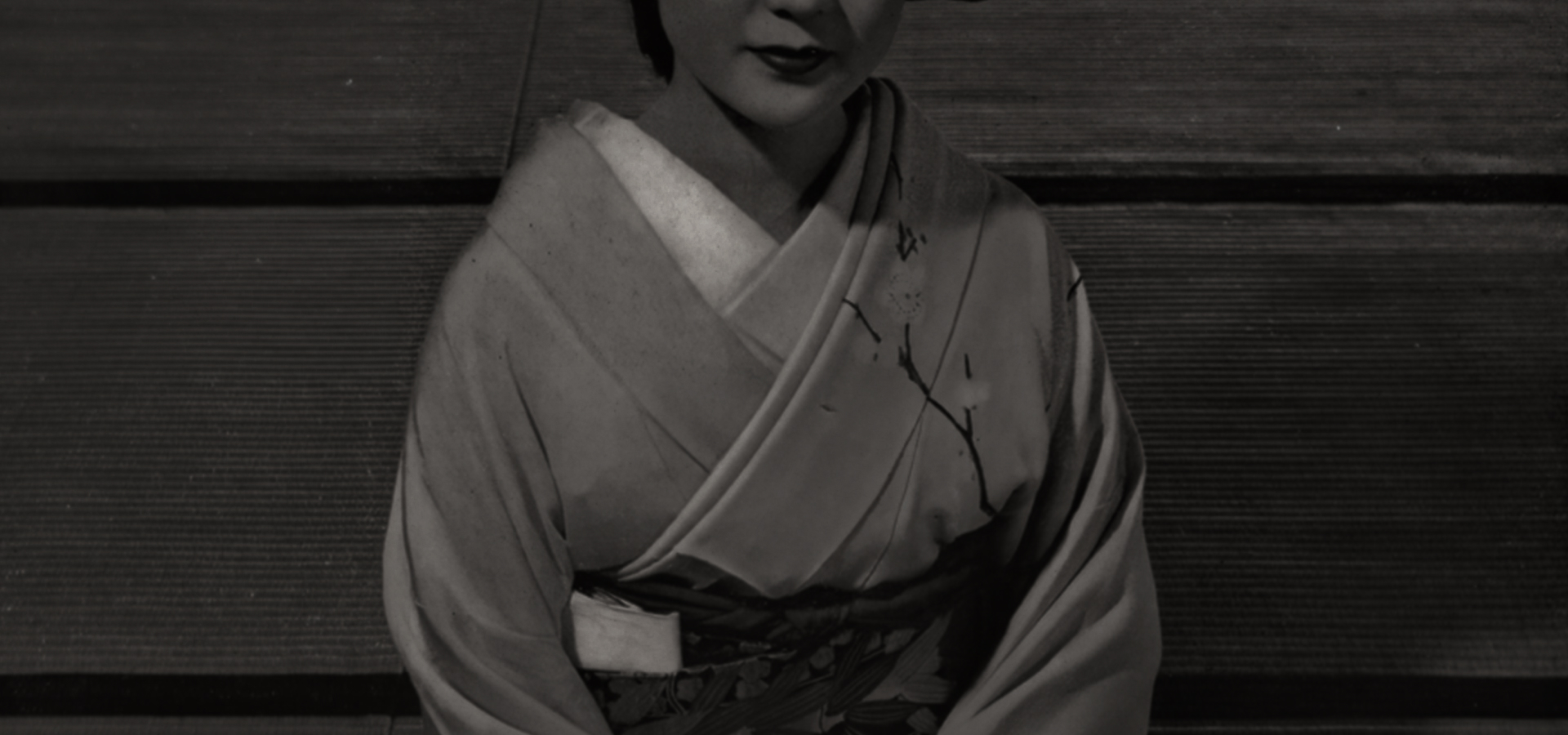
Japanese Traditions
Learn more about kimono culture and stylistic beauty in Japan.
日本における着物文化と様式美を知り、もっと着物文化に深く触れてみましょう。
Types of Kimono
There are many types of “Kimono”. Each with its own patterns and prestige, and the occasions in which they can be worn differ greatly.
「着物」といっても、たくさんの種類があります。
それぞれに「格」があり、着ることのできるシーンや柄が大きく異なります。
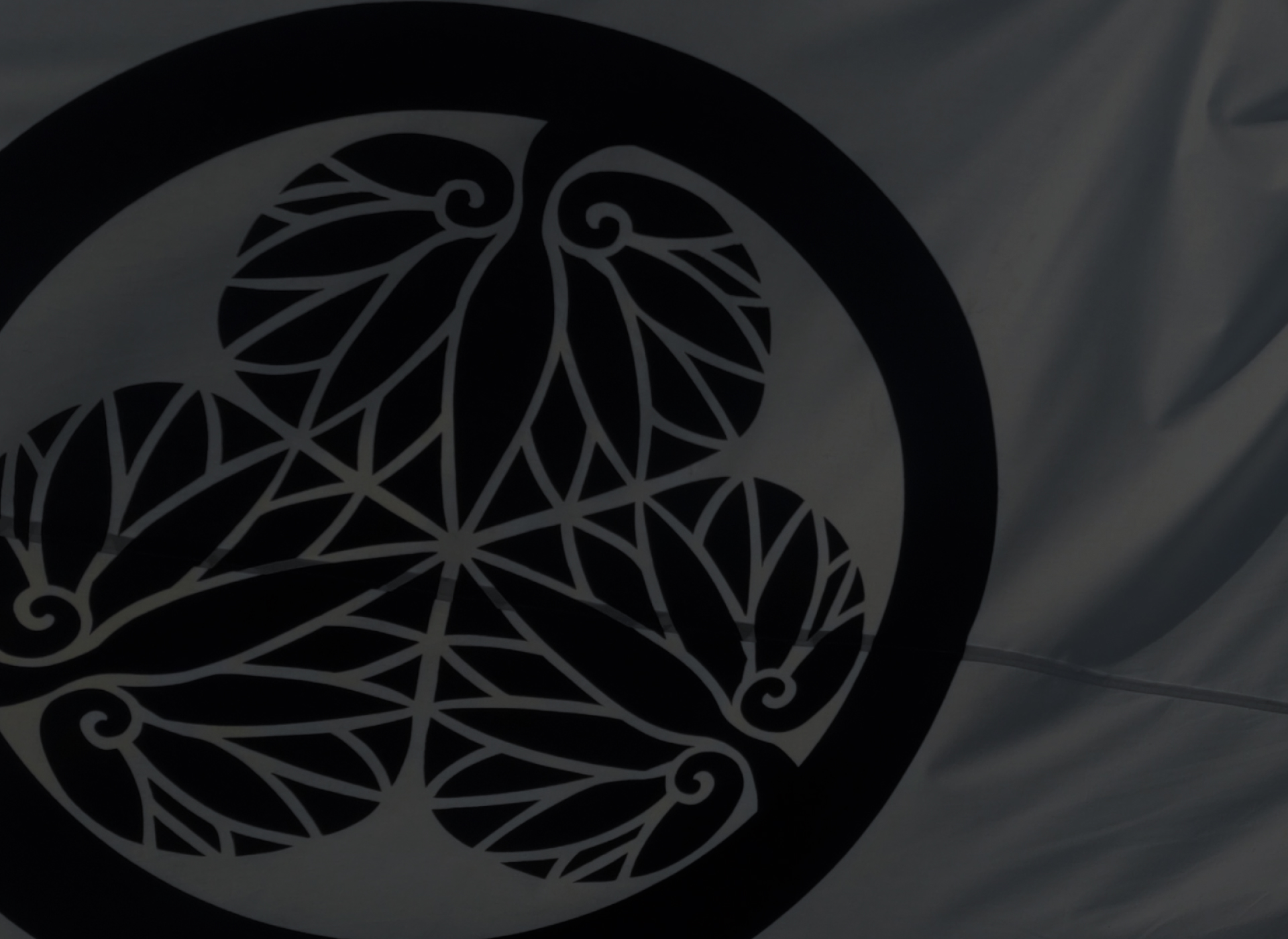
“Kamon”:
Japanese emblems
“Kamon” is a symbol that identifies each family. It is like a coat of arms in Europe, but does not represent an individual, but rather a family. Kamon designs are often decided by each family,and can be owned by any member of the family regardless of status.
Kamon is often used on clothing and other items worn by the family, and especially on kimonos, making the kimono unique in the world.
家紋とはそれぞれの家を識別するためのシンボルであり、ヨーロッパにおける紋章のようなものです。ただし紋章のように個人を表すものではなく、家を表すものとして生まれました。また、そのデザインは各家が独自に決めたものも多く、身分にかかわらず持つことができました。
衣服などの身に付けるものにあしらわれることも多く、特に着物に家紋が入ることによって、その着物を世界でひとつたらしめています。
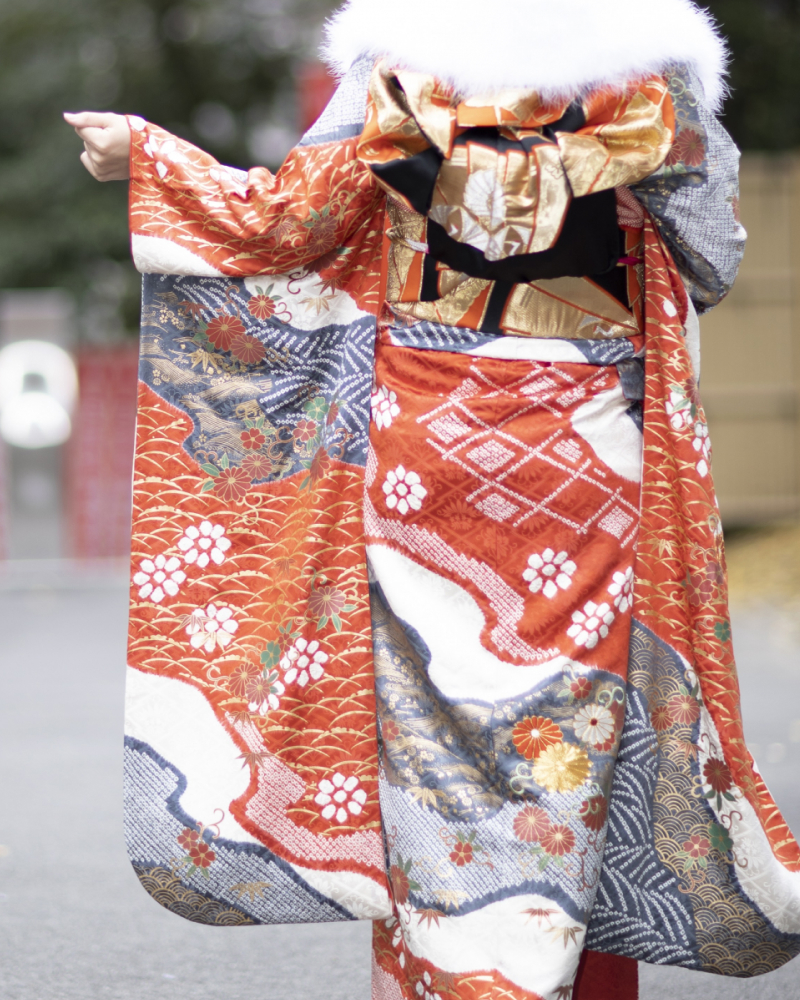
The Symbolic Meaning of Kimono Sleeves: A Reflection of the Japanese Spirit
Kimono sleeves are more than fabric; they embody Japanese aesthetics, emotions, and traditions. Woven into their flowing form is deep symbolism reflecting the Japanese spirit.
Sleeve Movements Express Emotions
Anciently, sleeve movements expressed emotions:
Love: Waving a sleeve gently was a call to a loved one.
Farewell: "Soaking one's sleeves" poetically means shedding tears in parting.
Ward off misfortune: Waving sleeves dispelled bad luck.
Expressions and Proverbs Related to Sleeves
Japanese culture has phrases capturing the deep significance of kimono sleeves:
"Sode furiau mo tashō no en" (袖振り合うも多生の縁): Even a brief encounter, like brushing sleeves, is believed to result from a past-life connection.
"Sode ni suru" (袖にする): To turn away coldly from someone, showing indifference.
"Sode o nurasu" (袖を濡らす): To shed tears, symbolizing deep sorrow or heartbreak.
"Furu sode ga nai" (振る袖がない): To have a calm and peaceful heart, free from distress.
Kimono sleeves are more than attire; they express love, fate, and the beauty of the human heart, embodying Japan's timeless culture and emotions.
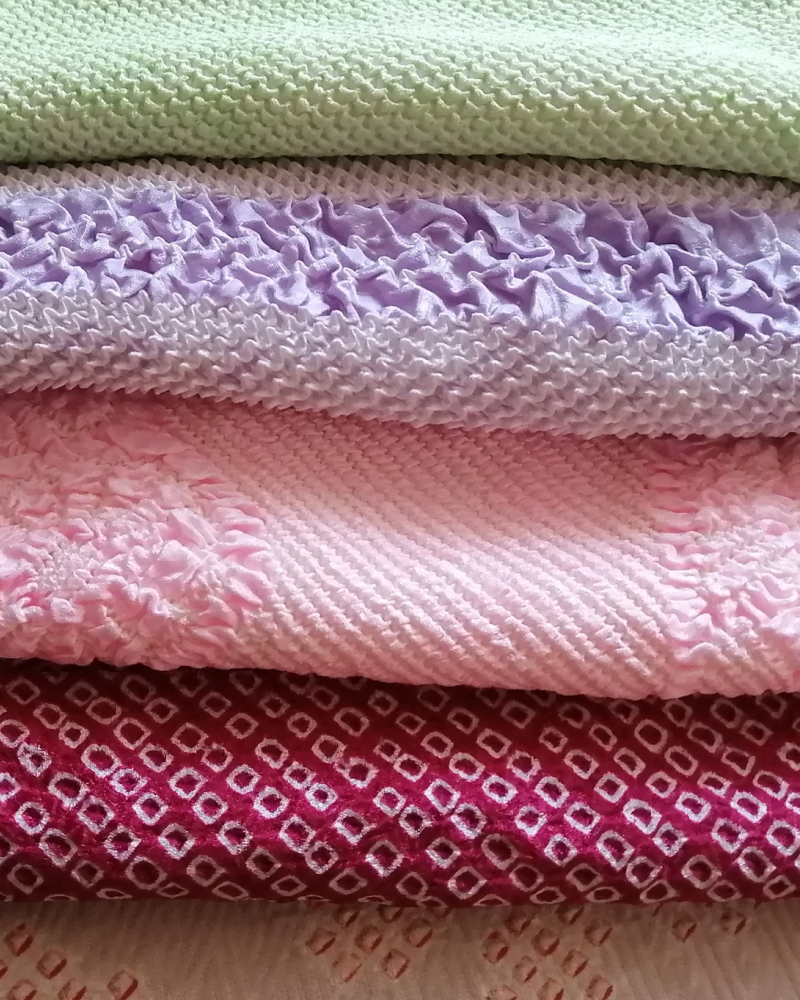
Shibori: The Art of Time and Precision
Shibori dyeing is an intricate and time-intensive art, requiring exceptional skill and precision.
Meticulous Preparation: Each design is carefully planned, with fabric skillfully tied or stitched to create patterns.
Delicate Handwork: Techniques like Kanoko Shibori involve individually binding countless tiny sections by hand—a single kimono can take months to complete.
Masterful Dyeing: The fabric is dyed with expert precision to ensure even color distribution. Once untied, the fabric reveals its signature textured patterns.
Time & Dedication: A fully shibori-dyed kimono may take over a year to craft, with additional finishing steps to perfect its form.
Rarity & Value: As skilled artisans become increasingly rare, hand-dyed shibori kimonos are now treasured works of art, embodying centuries of craftsmanship.
Each piece is a testament to patience, dedication, and the timeless beauty of Japanese tradition.
Contact us
If you have any questions about our creations or other inquiries, please contact us here.
製品に関するご質問やお問い合わせは、こちらからご連絡ください。






